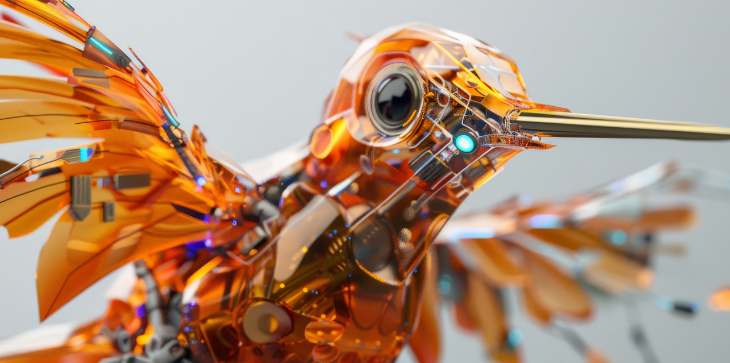In the heart of a warehouse on the outskirts of Singapore, hundreds of small robots glide seamlessly across the floor. They carry packages, rearrange shelves, and even conduct routine maintenance. What may appear as robotic chaos is actually a tightly coordinated dance. This is swarm robotics in action — a fast-emerging field reshaping the future of industrial automation.
As industries across Asia accelerate their digital transformation efforts, swarm robotics has moved from academic theory into real-world application. Fueled by advances in artificial intelligence, wireless communication, and real-time sensing, these collective robotic systems are poised to become the backbone of tomorrow’s smart factories, supply chains, and infrastructure.
What is Swarm Robotics?
Inspired by the behavior of social insects like ants and bees, swarm robotics refers to the coordination of multiple simple robots to perform complex tasks collectively. Unlike traditional robots that rely heavily on centralised control, swarm robots operate through decentralised intelligence — making decisions based on local data and interactions with peers.
“Swarm robotics doesn’t rely on a master controller,” explained Professor Daniel Tan, robotics lead at Nanyang Technological University (NTU). “Each unit follows basic rules, but when deployed in large numbers, they achieve sophisticated results through collaboration and adaptability.”
This approach allows the swarm to be flexible, resilient, and scalable, making it ideal for environments that are dynamic, vast, or too hazardous for human intervention.
Revolutionising Industrial Automation
In manufacturing plants and logistics hubs, swarm robots are already beginning to complement — and in some cases, replace — traditional automated systems. Their distributed design means they can cover more ground, reroute around blockages, and even replace malfunctioning members of the swarm without interrupting operations.
In China, a major e-commerce giant has deployed a fleet of over 1,000 autonomous swarm robots in one of its smart warehouses. These robots sort, package, and dispatch thousands of items per hour with minimal human supervision.
“Efficiency gains are substantial,” said Dr. Liu Wen, automation systems director at the warehouse. “Compared to conventional conveyor-based automation, swarm systems adapt faster to changes in inventory, orders, or layout.”
Back in Southeast Asia, Singapore and Malaysia are exploring the use of swarm robotics in port operations and semiconductor manufacturing, industries where downtime is costly and adaptability is key.
Strength in Numbers: How the Swarm Works
Each robot in a swarm is usually small, inexpensive, and capable of limited tasks on its own. However, when working in concert, these robots can complete large-scale assignments with impressive coordination.
Swarm robots rely on technologies such as:
-
Real-time wireless communication to share status and updates.
-
Sensors (such as LiDAR, ultrasonic, or cameras) to detect objects and navigate.
-
Edge computing to process data locally and reduce latency.
-
Machine learning to adjust behaviors over time.
The most powerful feature of swarm robotics is emergence — complex group behavior arising from simple individual rules. For example, if a path is blocked, robots may communicate an alternate route or shift their collective formation to solve the issue without human intervention.
Beyond the Factory: Swarms in the Field
While factories and warehouses are early adopters, the applications of swarm robotics stretch far beyond.
In agriculture, swarm drones are being trialed for crop monitoring, pest control, and precision fertilisation. These aerial units scan fields in formation, gather high-resolution data, and even release micro-doses of pesticides with surgical accuracy.
In disaster zones, ground and aerial swarms can search for survivors, assess structural damage, and establish communication networks. During a 2024 earthquake drill in Japan, a robotic swarm successfully mapped a collapsed building in minutes — a task that would take human teams hours.
Meanwhile, oil and gas companies in Indonesia are testing underwater swarms to inspect offshore pipelines and seabed installations, reducing the need for costly human dives or submersibles.
Challenges and Risks
Despite the promise, the rise of swarm robotics also presents challenges — both technical and ethical.
Interference and communication breakdowns remain a concern, especially in environments with signal congestion or physical obstructions. Engineers are developing backup protocols and mesh networks to ensure system resilience.
Security experts warn of cyber vulnerabilities in swarm systems. “If even a small portion of a robotic swarm is compromised, it could cause widespread disruption,” noted cybersecurity analyst Maya Rahim. “We need robust encryption, identity verification, and intrusion detection tailored for decentralized systems.”
Ethical questions are also emerging. As swarms grow more autonomous, who is accountable when things go wrong? How do we ensure swarms don’t replace low-skilled jobs without pathways for workforce transition?
What’s Next?
Experts believe that over the next five to ten years, swarm robotics will shift from experimental to essential.
“Swarm robotics is not just a niche innovation. It’s a foundational technology that will enable the next generation of automation,” said Prof. Tan. “From smart cities to smart agriculture, these systems will be everywhere.”
Advancements in battery life, quantum communication, and AI-driven coordination are expected to accelerate adoption. Analysts predict that by 2030, global investments in swarm robotics will exceed US$30 billion, with Asia-Pacific leading the market.
A Glimpse Into the Future
Imagine a world where a swarm of cleaning robots sanitizes a hospital wing every night. Where hundreds of flying robots inspect bridges, buildings, and crops simultaneously. Where fleets of coordinated drones deliver goods, plant trees, or respond to emergencies — all with minimal human oversight.
This future is closer than we think.
As industries continue to push the boundaries of automation, swarm robotics stands as a key enabler of a smarter, safer, and more efficient world. For Southeast Asia, embracing this trend is not just an option — it’s a competitive imperative.





